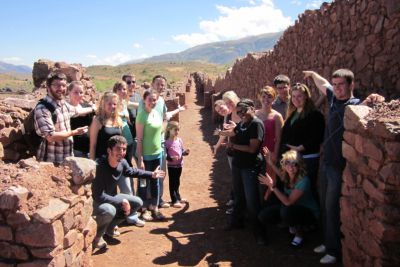Walking through history

Just outside Cusco are three particularly interesting archeological sites that we were able to explore during our recent travels. We started at Tipon, a 500-acre complex of hillside farming terraces and water channels carved in stone that the Incas took control of and developed shortly after 1400 A.D. Water from a natural spring still flows through the channels and fountains at Tipon, making this marvel of civil engineering feel like it’s functioning as the Incas would have wanted.
We also visited the town of Pikillaqta, a 25,000-acre city that includes warehouses and barns and two- and three-story buildings made of stone slabs and mud mortar. The Wari people built Pikillaqta sometime between 500-900 A.D., well before the Incas came into power.
Finally, we visited Sacsayhuamán, just one mile outside Cusco. This massive complex was built between 1431-1508 and was a religious, military, and political headquarters for the Inca Empire. It features impressive stonework–the largest stone weighs about 70 tons, and the builders fit the stones together so perfectly there was no need for mortar. There weren’t many tourists on the day we visited, but the busiest time for Sacsayhuamán is rapidly approaching: The Inti Raymi festival takes place here on June 24, and thousands come to see the historical reconstruction of the Inca festival of the sun.













































